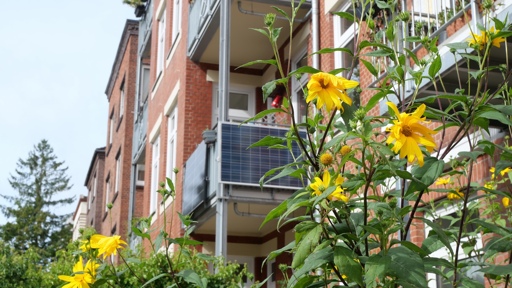Regulations limit each system to just 800 watts, enough to power a small fridge or charge a laptop
What kind of clueless person wrote this. Whoever wrote this clearly has no idea how much 800W is in practice. Our fridge with an attached freezer (full size, 60cm wide, normal to large in Europe) never uses more than 70-90W, duty cycle is around 40%. So on average it uses 30W or so.
My gaming laptop is limited to 180W. Normally it uses much much less (50ish when actively used). My gaming desktop PC with 3 monitors uses 800W under full load, but that’s with everything (monitors, amp/speaker, …). Even with multiple PCs in normal (non gaming) use in the house, seeing over 800W isn’t common. Or 10 laptops, not “a small laptop”.
800W is enough to power our whole house unless we’re cooking or taking a shower. I would argue in general, it will nullify noon-peak loads of an entire household, and whatever is left over gets added to the grid.
The plug and play solar panels described in the article do net feed back into the grid, that’s why they’re so simple to setup. You still need landlord approval to install them, because fuck your personal freedom if you live in Germany, but for the standards here, this is incredibly simple.
Sorry but the first part is just incorrect. They are indeed simple, which is why they do feed back into the grid. Not feeding back would take effort and additional hardware. But you’re not being paid for what is fed back into the grid, making it free energy for the electricity provider (see my last paragraph below).
To explain it a bit: electrically, the external grid and the grid in your home are simply connected (assuming the breakers are closed). If you use more than you produce, whatever is missing “flows in”. If you produce more than what you’re currently consuming, whatever is left over just flows out into the grid. Even if this if obviously simplified, this “just happens” with no effort required, but the amount that flows in or out is easy enough to measure (which is what the electricity meter does that sits between the big grid and the one in your house). If you want to actually make sure you don’t feed back into the grid, you would constantly need to monitor if anything is flowing in our out, and compensate with reduced (or increased) production. Even full size solar installations can’t do this with perfect precision, even if you tell them to: you can only react to the flow you see coming in/out, if you turn a large heater quickly on and off and on and off, it won’t have time to react quickly enough.
For the longest time (until early 2023 I think), you had to ask permission from your electricity network operator (is that the correct term? “Netzbetreiber”), because they would only allow you to install it if you had at least a semi-modern electricity meter that won’t turn backwards. Because balcony solar always feeds into the grid, you’d effectively be paid the same per kWh as what you’re paying yourself. You would effectively use the grid as a infinitely large battery.
Or running HVAC or an air pump for heating.
That said 800w will be the nominal amount under near perfect conditions, 80%- 90% of the time it won’t be anywhere near that.
We (m and f couple) lived of grid for 10 years on a 2kW solar system and batteries with ease no generator for backup but a gas oven, 1 * induction cook top, 2x pedestal fans and 1 x celing fans, toaster, kettle, microwave and a no electrical boost solar system. Mid size diesel truck we used minimamilay (lived way out in the bush growing our own stuff etc) We’re naturally energy thrifty though. At S30° latitide, awesome for solar.
We’ve since moved to S41°, terrible for solar in winter (short days and thats the wet season). We have 8kW solar but are on grid (feed excess solar into the grid) and charge our mid sized e-truck (use minimially) off solar, and have a heat pump for heating, so we use more electrons but no fossil fuel.
As I’d replied to a sister comment of yours, I didn’t even consider that the author could be talking about actually available power, so that’s on me. I did go re-read it and I really don’t think that’s how it is meant though. I do think they are just ignorant on this point.
That being said, “balcony solar” isn’t limited to 800 W in panels. It’s limited to an 800 W inverter, but 2 kW for the panels. So you can have quite a bit more capacity in solar compared to the inverter, which also means that worse weather impacts you less. When you got a full sunny day, you can have the full 800 W for much longer, if not most of the day, as it’ll essentially be limited further down the chain. On the other hand I do think the most common size actually installed is much closer to also only have 800-900 Wp (basically 2 panels), which is the most commonly offerend (and presumably sold) kit size.
We also have roughly 8 kWp installed, and obviously on cloudy or dark winter days we’re an order of magnitude away from that number. There are days where we break 40 kWh in production, and there are days where we barely make it to 1 kWh. That low is very rare, even in winter or on dense, cloudy days, so I’d consider 4 kWh a more realistic minimum value. We have relatively detailed monitoring of most (relevant) consumers, which is why I have a somewhat good idea of how much our house consumes in practice. Before this full size installation, we had a 2 panel balcony solar “test setup” for quite a while. It was actually quite a (positive) surprise on how many days we essentially covered the majority of our daylight usage with these panels. Obviously not for the big-ticket consumers, but even a washer/dryer will be mostly covered.
What kind of clueless person wrote this. Whoever wrote this clearly has no idea how much 800W is in practice.
Average available power < installed power
Ok, fair point. But even considering that as an option, it’s not at all how I read that paragraph even if I actively keep this in mid.



